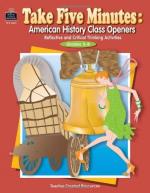|
This section contains 616 words (approx. 3 pages at 300 words per page) |

|
Leisure Time.
Amusement parks and national parks in the late nineteenth century represented two sharply different visions of the use of leisure time. Amusement parks were man-made environments that duplicated and distorted the urban experience, and did everything they could to prevent contemplation. Meanwhile, national parks were celebrated for their natural grandeur and the possibility of solitude and contemplation.
Early Developments.
American amusement parks in the late nineteenth century began as wooded parks at the end of trolley lines and noisy avenues on the outskirts of cities. Their growth was the direct result of the development of streetcar and railway lines and, later, subway systems. Since electric power companies charged transit firms a flat monthly rate regardless of the amount of electricity used, city railway owners needed to increase the number of riders during slow weekends and evenings. The...
|
This section contains 616 words (approx. 3 pages at 300 words per page) |

|




